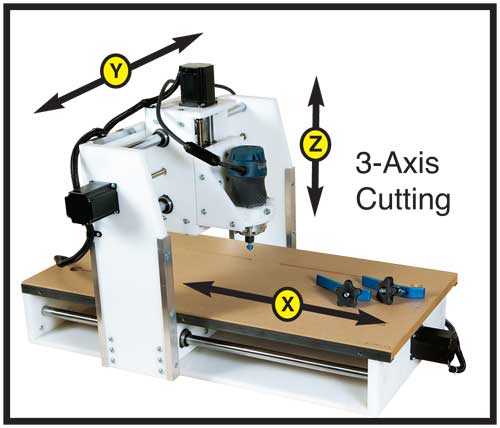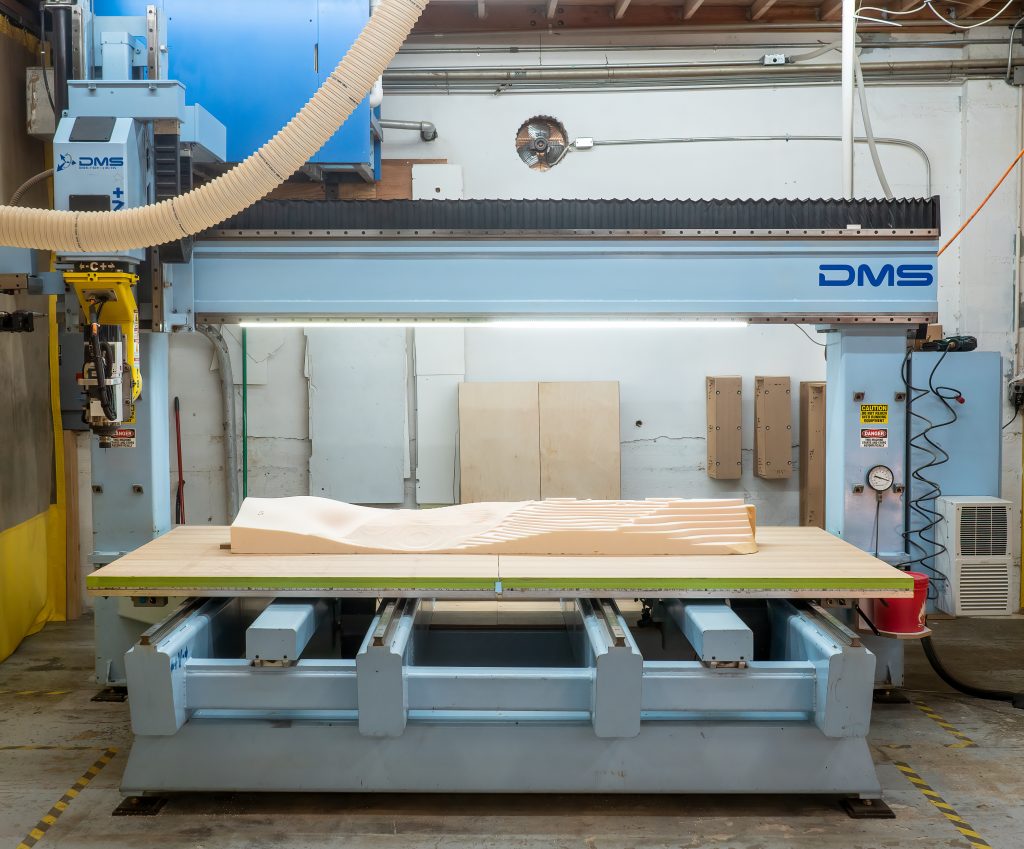Are you looking to build your very own CNC router but don’t know where to start? Look no further! In this article, we’re going to take you through the step-by-step process of building a CNC router that is both affordable and efficient.
A CNC router is an essential tool for any woodworker, metalworker, or hobbyist looking to create precise cuts and designs. By the end of this article, you’ll have all the knowledge and resources you need to build your own CNC router from scratch. Let’s get started!
- First, gather all the necessary components including stepper motors, controller board, power supply, and spindle.
- Next, assemble the frame and mount the stepper motors and controller board.
- Connect the wiring and test the electronics to ensure they are functioning properly.
- Finally, attach the spindle and set up the software to control the machine.
Building a CNC Router: A Comprehensive Guide
CNC routers are a great addition to any workshop, as they can cut, carve, and engrave a wide range of materials with precision and accuracy. If you’re interested in building your own CNC router, this guide will provide you with all the information you need to get started.
1. Choosing Your Design
Before you start building your CNC router, you need to choose a design that suits your needs. There are many different designs available, from simple DIY routers to more complex commercial models. Some factors to consider when choosing your design include the type of materials you’ll be working with, the size of the machine, and your budget.
Once you’ve chosen your design, you’ll need to source the necessary components. This may include things like motors, controllers, bearings, and screws. You may be able to find these components online or at your local hardware store.
2. Building the Frame
The frame is the backbone of your CNC router, and it’s important to build it strong and sturdy. You can use a variety of materials for the frame, including wood, aluminum, or steel. Make sure to follow the design plans closely, and use precise measurements to ensure everything fits together properly.
Once you’ve built the frame, you can mount the motors, controllers, and other components onto it. Make sure everything is securely attached and properly aligned.
3. Installing the Spindle
The spindle is the cutting tool that will be used to carve and engrave your materials. You’ll need to install it onto your CNC router using a mounting bracket or clamp. Make sure it’s properly aligned and securely attached before you start using it.
4. Wiring the Electronics
Wiring the electronics can be a complex task, but it’s essential to ensure your CNC router operates correctly. You’ll need to connect the motors, controllers, power supply, and other components together using wires and cables. Follow the wiring diagram closely, and double-check all connections before powering on the machine.
5. Configuring the Software
To control your CNC router, you’ll need to install software on your computer. There are many different software options available, including open-source programs like GRBL and Mach3. Once you’ve installed the software, you’ll need to configure it to work with your specific machine.
6. Testing and Calibration
Before you start using your CNC router, you’ll need to test and calibrate it to ensure everything is working correctly. This may involve running test cuts on different materials, adjusting the spindle speed and feed rate, and fine-tuning the machine’s settings.
7. Safety Precautions
Using a CNC router can be dangerous if proper safety precautions aren’t taken. Always wear eye and ear protection, and keep loose clothing and long hair away from the machine. Make sure to follow all safety guidelines and instructions provided with your CNC router.
8. Benefits of Building Your Own CNC Router
Building your own CNC router can be a rewarding experience, and it offers many benefits over buying a commercial machine. You can customize the design to suit your specific needs, and you’ll have a better understanding of how the machine works. Building your own CNC router can also be more cost-effective than buying a pre-built machine.
9. Vs Buying a Pre-Built Machine
While building your own CNC router has many benefits, buying a pre-built machine may be a better option for some people. Pre-built machines are often easier to set up and use, and they come with technical support and warranties. However, they can also be more expensive than building your own machine.
10. Conclusion
Building your own CNC router can be a challenging but rewarding project. By following the steps outlined in this guide, you can build a machine that suits your specific needs and budget. Whether you’re a hobbyist or a professional, a CNC router can be a valuable tool in your workshop.
Frequently Asked Questions
Building a CNC router can seem like a daunting task, but with the right tools and resources, it can be a rewarding and cost-effective project. Here are five frequently asked questions and answers on how to build a CNC router.
What materials do I need to build a CNC router?
Building a CNC router requires a few key materials, including a frame or base, stepper motors, a control board, and a spindle or router. The frame or base should be made of sturdy materials like aluminum extrusion or steel tubing to ensure stability and accuracy. Stepper motors provide precise control of the router’s movements, while a control board allows you to program and control the machine. The spindle or router is used to cut and shape materials, and can be chosen based on the specific needs of your project.
In addition to these key components, you may also need various hardware such as screws, nuts, and bolts, as well as wiring and power supplies. It’s important to research and choose high-quality components that are compatible with each other to ensure a smooth and successful build.
Can I build a CNC router without any prior experience?
While building a CNC router does require some technical knowledge and experience, it is possible for beginners to learn and succeed with the right resources and guidance. There are many online tutorials, forums, and communities dedicated to CNC router building, and many hobbyists and enthusiasts are willing to share their knowledge and experience. It’s important to start with a clear plan and design, and follow instructions carefully to avoid mistakes or safety hazards.
It may also be helpful to practice with simpler DIY projects or kits before diving into a full CNC router build. With patience, persistence, and a willingness to learn, even beginners can successfully build a CNC router.
How much does it cost to build a CNC router?
The cost of building a CNC router can vary depending on the size, complexity, and quality of materials used. A basic DIY CNC router can cost as little as $200 to $300, while a larger, more advanced machine can cost several thousand dollars. It’s important to consider the specific needs of your project and budget accordingly.
However, building a CNC router can be a cost-effective alternative to purchasing a pre-built machine, especially if you already have some of the necessary tools and equipment. By sourcing materials and components from reputable suppliers and taking the time to research and plan the build, you can ensure a high-quality machine that meets your specific needs at a reasonable cost.
What software do I need to run a CNC router?
In addition to the physical components of a CNC router, you’ll also need software to program and operate the machine. There are many different software options available, ranging from free open-source programs to expensive commercial software. Some popular options include Mach3, GRBL, and LinuxCNC.
It’s important to choose software that is compatible with your control board and meets your specific needs, such as support for 3D modeling or G-code programming. You may also need to learn some basic programming and CAD skills to effectively use the software and create designs for your CNC router.
What safety precautions should I take when building and using a CNC router?
Building and using a CNC router can involve some safety hazards, such as sharp tools and moving parts. It’s important to take appropriate safety precautions to avoid injury or damage to the machine. This can include wearing protective gear like eye and ear protection, avoiding loose clothing or jewelry, and keeping hands and fingers away from moving parts.
You should also take care to properly ground the machine and power supply, and avoid using the machine in wet or humid conditions. It’s also important to carefully follow instructions for building and operating the machine, and seek help or guidance if you’re unsure about any aspect of the process.
In conclusion, building a CNC router is a challenging but rewarding project that requires patience, attention to detail, and a willingness to learn. With the right tools and resources, anyone can create a machine that can produce precise and intricate designs.
Whether you’re using it for personal projects or as part of a business, a CNC router can be a valuable addition to your workshop. By following the steps outlined in this guide and taking the time to troubleshoot any issues that arise, you can create a machine that meets your specific needs and helps you achieve your goals.
So, what are you waiting for? Gather your materials, do your research, and get started on building your own CNC router today. With a little bit of hard work and determination, you can have a powerful new tool in your arsenal that can take your woodworking or metalworking projects to the next level. Good luck and happy building!
Request a quote today!
[contact-form-7 id="1578" title="Contact form"]
Please compress the file into a ZIP or RAR file before uploading. Alternatively, send through your RFQ by email.
enquires@unitymanufacture.com





